BCATP SITES Then and Now
It is interesting to look at how Alberta affected the British
Commonwealth Air Training Plan (BCATP), but how did the
Plan have an impact in Alberta?
Previous to World War II and the immense aerodrome
Between 1939 and 1942, each of the locations below was chosen
by the Department of National Defence to be used in training
Commonwealth Air Forces. Select a location and discover
the history of each site.

Bowden
Royal Air Force (RAF) Station Bowden, Alberta
Home of No. 32 Elementary Flying Training School (EFTS)
In late 1940, farm area just north of the Bowden town site
was expropriated to become one of the British Commonwealth
Air Training Plan bases. No. 32 Elementary Flying
Training School was operational from July 1941
to September
 1944. The preliminary work was done
and the school was taking students in the fall of 1941.
As a Royal Air Force base, the school was operated under
the command of personnel from Great Britain, however, later
on the Royal Canadian Air Force took over operations. 1944. The preliminary work was done
and the school was taking students in the fall of 1941.
As a Royal Air Force base, the school was operated under
the command of personnel from Great Britain, however, later
on the Royal Canadian Air Force took over operations.
After the war, the Bowden base was used as a reform school
and then became its present day facility, a prison.
-- Top --
Calgary
Royal Canadian Air Force (RCAF) Station Calgary, Alberta
Home of No. 3 Service Flying Training School (SFTS)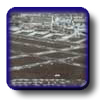
In 1939, there were two Royal Canadian Air Force (RCAF) Permanent Force
Squadrons stationed
at Currie Barracks, Calgary. They were RCAF No. 3 (B) Squadron
and RCAF No. 1 (F) squadron. During World War II, No. 1
(F) squadron was renumbered as No. 401 after being posted
overseas,
eventually flying with distinction during the Battle of
Britain.
 On the homefront, No. 3 Service
Flying Training School (SFTS) was opened on Currie
Field, Calgary on October 28, 1940. While the site was a
pre-war flying field, it was not until the RCAF had chosen
it and brought it up to their standard that the landing
strip was paved. The school was open until September 28,
1945 and trained many pilots. After the BCATP, this base
was used to train NATO pilots until 1958. Following that,
until 1964, portions of the site were kept open as an emergency
landing strip for pilots who might have been using old wartime
maps. In 1972, Mount Royal College opened its Lincoln Park
Campus and was using portions of runways as student parking
lots. Today, north of the campus, on the former Canadian
Forces Base (CFB) Currie, No. 3 SFTS hangars still remain
and are used for all sorts of purposes, including housing
businesses and film sets. A monument commemorating the BCATP
hangs in the new plaza at Mount Royal College. On the homefront, No. 3 Service
Flying Training School (SFTS) was opened on Currie
Field, Calgary on October 28, 1940. While the site was a
pre-war flying field, it was not until the RCAF had chosen
it and brought it up to their standard that the landing
strip was paved. The school was open until September 28,
1945 and trained many pilots. After the BCATP, this base
was used to train NATO pilots until 1958. Following that,
until 1964, portions of the site were kept open as an emergency
landing strip for pilots who might have been using old wartime
maps. In 1972, Mount Royal College opened its Lincoln Park
Campus and was using portions of runways as student parking
lots. Today, north of the campus, on the former Canadian
Forces Base (CFB) Currie, No. 3 SFTS hangars still remain
and are used for all sorts of purposes, including housing
businesses and film sets. A monument commemorating the BCATP
hangs in the new plaza at Mount Royal College.
Royal Air Force (RAF) Station Calgary, Alberta
Home of No. 37 Service Flying Training School (SFTS)
 No.
37 Service Flying Training School (SFTS) was a Royal Air Force base opened in 1942. After
the war, the aerodrome remained active and became the City
Municipal Airport. Today, this site is the home of the Calgary
International Airport. Most of the buildings that were constructed
for the BCATP have long since been dismantled, however the Calgary Aerospace Museum is located in one of the few
remaining hangars. No.
37 Service Flying Training School (SFTS) was a Royal Air Force base opened in 1942. After
the war, the aerodrome remained active and became the City
Municipal Airport. Today, this site is the home of the Calgary
International Airport. Most of the buildings that were constructed
for the BCATP have long since been dismantled, however the Calgary Aerospace Museum is located in one of the few
remaining hangars.
“In time of war, sacrifices must be made, and ours are
minor in comparison with those bearing the brunt of
the battle over there”
-Dr. W.G. Carpenter, Principal of the Provincial Institute
of Technology and Art (now SAIT), about giving up their
location to the Department of National Defence |
Royal Canadian Air Force (RCAF) Station Calgary, Alberta
Home of No. 2 Wireless School (WS)
Prior to World War II, this site was home to the Provincial
Institute of Art and Technology. It was relinquished, both
the buildings and grounds, to the Royal Canadian Air Force in 1940 for the
duration of World War II. After the war, the property was
returned to the Institute and is now the home of Southern Alberta Institute of Technology (SAIT). The
building that No. 2
Wireless School (WS)
was located in still remains, although nothing else does.
There is a BCATP commemorative plaque located on the SAIT
campus.
Royal Canadian Air Force (RCAF) Station Calgary, Alberta
Home of No. 10 Repair Depot
No. 10 Repair Depot repaired aircraft damaged while being
used in training. It was located across the field from No.
3 Service Flying Training School. Today the ATCO company resides at this site.
 Royal
Canadian Air Force (RCAF) Station Calgary, Alberta Royal
Canadian Air Force (RCAF) Station Calgary, Alberta
Home of No. 11 Equipment Depot
All that remains of No. 11 Equipment Depot today are two
large sandstone buildings located close to the railroad
tracks. The buildings now house civilian trades.
-- Top --
Claresholm
Royal Canadian Air Force (RCAF) Station Claresholm,
Alberta
Home of No. 15 Service Flying Training School (SFTS)
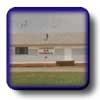 No.
15 Service Flying Training School (SFTS) was opened in Claresholm
June 9, 1941 and remained
open as a BCATP base until March 1945. In 1951, it was renamed
No. 3 Flight Training School and used to train pilots
for the Korean War. RCAF Station Claresholm was closed in
1958. Although closing the flight school was quite a loss
to the Claresholm community, the air force hangars were
subsequently converted to industrial uses and a small industrial
airport still remains active. The shell of a Harvard aeroplane
stands as a monument to the Plan in Claresholm Centennial Park. No.
15 Service Flying Training School (SFTS) was opened in Claresholm
June 9, 1941 and remained
open as a BCATP base until March 1945. In 1951, it was renamed
No. 3 Flight Training School and used to train pilots
for the Korean War. RCAF Station Claresholm was closed in
1958. Although closing the flight school was quite a loss
to the Claresholm community, the air force hangars were
subsequently converted to industrial uses and a small industrial
airport still remains active. The shell of a Harvard aeroplane
stands as a monument to the Plan in Claresholm Centennial Park.
-- Top --
De Winton
Royal Air Force (RAF) Station De Winton, Alberta
Home of No. 31 Elementary Flying Training School (EFTS)
 In
1940 the federal government expropriated land from two
men reluctant to sell as they had homesteaded in the De
Winton area in the 1880s. However, the Canadian government had chosen
their land as a site for the British Commonwealth Air Training
Plan and construction of No. 31 Elementary Flying Training
School (EFTS) began in early 1941. Being a Royal Air Force base,
RAF staff were in charge, but in the summer of 1942, the
school In
1940 the federal government expropriated land from two
men reluctant to sell as they had homesteaded in the De
Winton area in the 1880s. However, the Canadian government had chosen
their land as a site for the British Commonwealth Air Training
Plan and construction of No. 31 Elementary Flying Training
School (EFTS) began in early 1941. Being a Royal Air Force base,
RAF staff were in charge, but in the summer of 1942, the
school
 became civilian
operated and instructors arrived predominantly from a flying
club in Malton, Ontario. Men from many countries had trained
here by the time the school was closed in September 1944. became civilian
operated and instructors arrived predominantly from a flying
club in Malton, Ontario. Men from many countries had trained
here by the time the school was closed in September 1944.
The base has not been used for many years and has fallen
into disrepair. A lonely gun butt remains on the property,
which is now privately owned.
-- Top --
Edmonton
Royal Canadian Air Force (RCAF) Station Edmonton, Alberta
Home of No. 16 Elementary Flying Training School (EFTS)
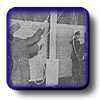 No. 16 Elementary Flying Training School (EFTS) was opened
November
11, 1940 at the Edmonton Municipal Airport. The facility had
opened January 8, 1927 and was then called Blatchford
Field. It was operated by the Northern Alberta Aero Club
until 1930 when the City of Edmonton took it over. During
the war, the airport was appropriated by the federal government
to use as an RCAF training base. It was operated by the
Northern Alberta Flying Training School Ltd. and under the
supervision of RCAF officers. The school was only open
a short while and was disbanded to make room for No. 2 Air
Observer School (AOS) in July of 1942. No. 16 Elementary Flying Training School (EFTS) was opened
November
11, 1940 at the Edmonton Municipal Airport. The facility had
opened January 8, 1927 and was then called Blatchford
Field. It was operated by the Northern Alberta Aero Club
until 1930 when the City of Edmonton took it over. During
the war, the airport was appropriated by the federal government
to use as an RCAF training base. It was operated by the
Northern Alberta Flying Training School Ltd. and under the
supervision of RCAF officers. The school was only open
a short while and was disbanded to make room for No. 2 Air
Observer School (AOS) in July of 1942.
Today, the municipal airport, now called the Edmonton City
Centre Airport, remains fully functional and is operated
by the Edmonton Regional Airport Authority. The Alberta
Aviation Museum is located in Hangar M, a remnant from the
BCATP, and works to preserve Alberta aviation history.
Royal Canadian Air Force (RCAF) Station Edmonton, Alberta
Home of
 No.
2 Air Observer School (AOS) No.
2 Air Observer School (AOS)
No. 2 Air
Observer School (AOS) was open from August 1940
to July 1944. It was located at what is now known as the
Edmonton City Centre Airport. W.R. “Wop” May, a talented
and renowned local aviator was quickly appointed the general
manager of the school. Canadian Airways were responsible
for operations until 1942 when Canadian Pacific
Airways took over. It was one of two AOS in Alberta during
the BCATP.
Royal Canadian Air Force (RCAF) Station Edmonton, Alberta
Home of No. 4 Initial Training School (ITS)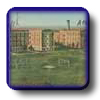
No. 4 Initial Training School was open from June 1941 to
November 1944. It was located at the University of Alberta.
Hanging inside of Pembina Hall is the propeller from what is
said to have been the first plane to cross over "the
Hump" (the portion of the Himalaya mountain range that
separates Burma and China) during World War II.
-- Top --
Fort Macleod
Royal Canadian Air Force (RCAF) Station Fort Macleod,
Alberta
Home of No. 7 Service Flying Training School (SFTS)

No. 7 Service Flying Training School (SFTS) was open in Fort Macleod from December 9, 1940
to November 17, 1944. The land it was built on was farmland
appropriated from local residents. After the war, the base
turned into No. 1 Repair Equipment and Maintenance Unit
(REMU) and was used to repair Royal Canadian Air Force aircraft.
Today, many of
the same buildings are standing and the airport remains
active and able to handle light aircraft. In Memorial Park,
in Fort MacLeod, two monuments have been erected to pay
tribute to those who participated in the BCATP.
-- Top --
High River
Royal Canadian Air Force (RCAF) Station High River,
Alberta
Home of No. 5 Elementary Flying Training School (EFTS)
 No. 5 Elementary Flying Training School (EFTS) was moved to the High River
Aerodrome in June,
1941. The aerodrome was built in 1921 and was used to support
the Dominion Forestry Branch by reporting locations of fires
and conducting pesticide No. 5 Elementary Flying Training School (EFTS) was moved to the High River
Aerodrome in June,
1941. The aerodrome was built in 1921 and was used to support
the Dominion Forestry Branch by reporting locations of fires
and conducting pesticide
 sprayings
and aerial photography for the Dominion Lands Office. In
1923, the civilian staff was replaced by 28 Royal Canadian
Air Force (RCAF) members
and remained under RCAF control for parachute and new aircraft
testing until 1931. At this time, the air station was closed
and used to store aircraft and for some civilian activity.
During the war, the air station was re-opened to accommodate
an Elementary Flying Training School. sprayings
and aerial photography for the Dominion Lands Office. In
1923, the civilian staff was replaced by 28 Royal Canadian
Air Force (RCAF) members
and remained under RCAF control for parachute and new aircraft
testing until 1931. At this time, the air station was closed
and used to store aircraft and for some civilian activity.
During the war, the air station was re-opened to accommodate
an Elementary Flying Training School.
In late 1940, instructors from the Calgary Aero Club began
training classes as local tradesmen and labourers built
facilities for the base. It officially opened September
23, 1941. The school graduated 117 courses before it closed
in December, 1944.
 After
the war, the base turned to civilian ownership and eventually
fell into disuse. Today, one hangar remains and is now the
site of Willow Creek Homes Ltd. After
the war, the base turned to civilian ownership and eventually
fell into disuse. Today, one hangar remains and is now the
site of Willow Creek Homes Ltd.
A local resident has been successful in lobbying the town
council into supporting a British Commonwealth Air Training
Plan monument. In August 2002, ceremonies were held to unveil
and dedicate a BCATP monument located in downtown High River
as well as another located at the former air base.
-- Top --
Lethbridge
Royal Canadian Air Force (RCAF) Station, Lethbridge,
Alberta
Home of No. 5 Elementary Flying Training School (EFTS)
No. 5 Elementary Flying Training School (EFTS) opened in
Lethbridge July 22, 1940. It was located at Kenyon Field,
a newly constructed civilian airfield. The local flying
club provided the instructors and
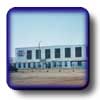 maintenance
personnel while the government fielded the aircraft, supplies
and all other necessary equipment for the school. Prior
to students arriving, local company Bennett and White Construction
set to work building new hangars and barracks. maintenance
personnel while the government fielded the aircraft, supplies
and all other necessary equipment for the school. Prior
to students arriving, local company Bennett and White Construction
set to work building new hangars and barracks.
In July of 1940, the first group of Royal Canadian Air
Force (RCAF) students arrived from No. 2 Initial Training
School (ITS) in Regina; there were 24 of them. Severe wind
in the area restricted pilot training and less than a year
after the base opened, it was moved to High River. Although
No. 5 EFTS was only open a short while, it trained a number
of pilots.
Royal Canadian Air Force (RCAF) Station, Lethbridge,
Alberta
Home of No. 8 Bombing and Gunnery School (B&GS)
Lethbridge was also home to No. 8
Bombing and Gunnery School
from October 13, 1941 to December 15, 1944. Located at Kenyon
Field, this was the only school in Alberta that trained
bomb aimers and air gu nners.
In addition to the space at Kenyon Field, the school leased
100 square miles from the Blood Indian Reserve to use
for bombing and gunnery practice. Almost 1,600 aircrew graduated from this school. nners.
In addition to the space at Kenyon Field, the school leased
100 square miles from the Blood Indian Reserve to use
for bombing and gunnery practice. Almost 1,600 aircrew graduated from this school.
When the RCAF left the base in 1944, it continued to be
used and is currently the site of the Lethbridge County
Airport.
-- Top --
Medicine Hat
Royal Air Force (RAF) Station, Medicine Hat, Alberta
Home of No. 34 Service Flying Training School (SFTS)
No. 34 Service Flying Training School (SFTS) was open from April 8, 1941 to November 17,
1944. In 1939, the Department of National Defence appropriated
the Medicine Hat Exhibition and Stampede Grounds and built the necessary
facilities for pilot training.
Today, the Medicine Hat Municipal Airport stands where the
BCATP base was. On the site is a large two piece monument
commemorating the Plan.
-- Top --
Pearce
 Six
kilometres north of Highway 3 stands the Airport Dairy on what
used to be Pearce airport. After the World War II, the airfield was
left to decay. For a number of years it was used as a holding
area Six
kilometres north of Highway 3 stands the Airport Dairy on what
used to be Pearce airport. After the World War II, the airfield was
left to decay. For a number of years it was used as a holding
area
 where wartime bombers were left and eventually dismantled
for scrap metal. The airport buildings were either moved
elsewhere or dismantled. Pearce used to be, essentially,
three grain elevators and a post office, but now even that
is gone. Today, there is a commemorative plaque located
at the former aerodrome. where wartime bombers were left and eventually dismantled
for scrap metal. The airport buildings were either moved
elsewhere or dismantled. Pearce used to be, essentially,
three grain elevators and a post office, but now even that
is gone. Today, there is a commemorative plaque located
at the former aerodrome.
Royal Air Force (RAF) Station Pearce, Alberta
Home of No. 36 Elementary Flying Training School (EFTS)
No. 36 Elementary Flying Training School (EFTS) was open for only
five months between March and August 1942. After that, the
school was closed to make room for No. 3 Air Observer
School (AOS),
which was moved from Regina in September of the same year.
Royal Canadian Air Force (RCAF) Station Pearce, Alberta
Home of No. 3 Air Observer School (AOS)
No. 3 Air Observer School (AOS) opened in Regina September 16, 1940 and
moved to Pearce September 12, 1942. This school was operated
by a civilian company, but aircraft, supervisors and instructional
staff were Royal Canadian Air Force. The school was never fully moved from Regina
due to lack of accommodation and facilities at Pearce. However,
classes were run between the two locations with impeccable
cooperation and the training was not interrupted. The school closed in June 1943.
Royal Canadian Air Force (RCAF) Station Pearce, Alberta
Home of No. 2 Flying
Instructor School (FIS)
 As
the output of flying instructors from the Central Flying
School in Trenton, Ontario was not able to meet the needs
of the BCATP, it was decided that another school of its
kind should be opened in
Alberta. Dubbed the “Western University for the Air”, August
3 1942, No. 2 Flying Instructor School (FIS) opened in Vulcan. In May
of 1943,
the school was moved to Pearce and remained a part of the
BCATP until it was closed in As
the output of flying instructors from the Central Flying
School in Trenton, Ontario was not able to meet the needs
of the BCATP, it was decided that another school of its
kind should be opened in
Alberta. Dubbed the “Western University for the Air”, August
3 1942, No. 2 Flying Instructor School (FIS) opened in Vulcan. In May
of 1943,
the school was moved to Pearce and remained a part of the
BCATP until it was closed in
January 1945.
-- Top --
Penhold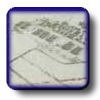
Royal Air Force (RAF) Station Penhold, Alberta
Home of No. 36 Service Flying Training School (SFTS)
In 1941, the Royal Air Force moved one of their
training schools out of Europe and to the safety of
Penhold, Alberta.
After the war, this site was owned and used by the Royal
Canadian Air Force until 1965 when the City of Red Deer
took it over and turned it into the Red Deer Municipal Airport.
In September of 1999 the Red Deer Regional Airport Authority
appropriated the ownership. Now the Red Deer Regional Airport,
this site is yet another example of the BCATP legacy in
Alberta.
-- Top --
Vulcan
Royal Canadian Air Force (RCAF) Station Vulcan, Alberta
Home of No. 19 Service Flying Training School (SFTS)
No. 19 Service Flying Training School (SFTS) was open in Vulcan from May 1943 to April
1945. The BCATP opened up a
 few
“double” schools, which were essentially much larger than
a regular school, and this base was one of them. After the
war, the base was closed and fell into civilian hands. few
“double” schools, which were essentially much larger than
a regular school, and this base was one of them. After the
war, the base was closed and fell into civilian hands.
Six of the of former RCAF hangars are privately owned and
some are occupied by light industrial businesses. Windows
and doors from Vulcan hangars are now being used at the
Commonwealth Air Training Plan Museum in Brandon, Manitoba. A monument
commemorating the Vulcan Aerodrome was erected and dedicated
on the site July 15, 2000.


|